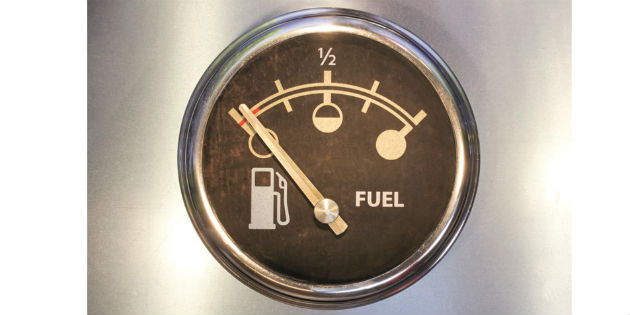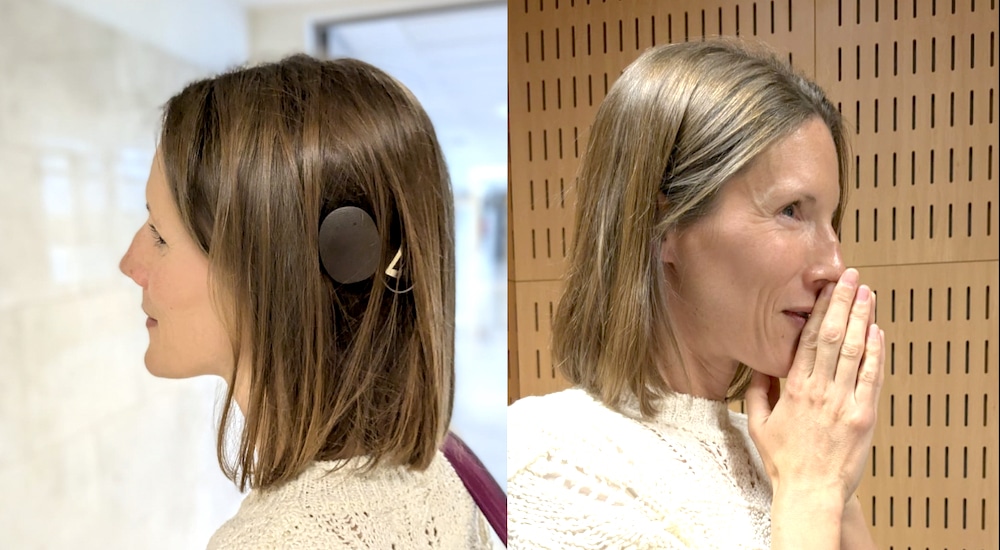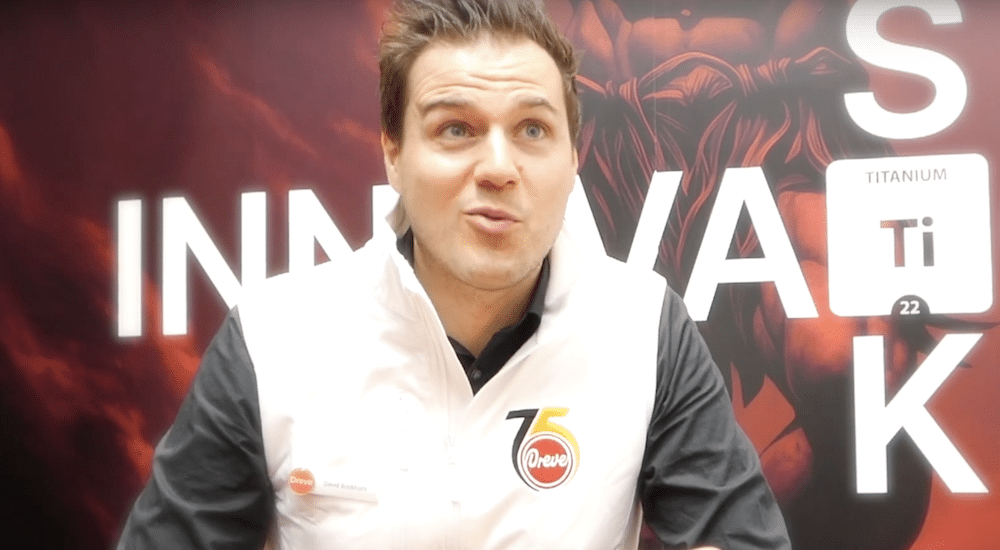Market trends: the charge of recharge
Rechargeability
Rechargeable batteries for hearing aids havebeen around for some time. Until recently theywere a footnote in hearing aid history. That isnow about to change.

Now the milestone ofa full day of service-without-recharge can beguaranteed, the market seems on the brinkof change. The less doubt about success of‘rechargeable’, the more the market wondersabout the shape of things to come: whatchemistry will prevail? And will integratedsystems or rather replaceable standard sizedrechargeable batteries define the future?
The customer perspective
The survey by Hearing Tracker is quiteclear: “New rechargeable technologies –that provide longer battery life in smallerpackages – are leading many hearing aidsconsumers to consider making the switch.”This conclusion is based on a survey with510 hearing aid using respondents, co-funded byZPower. 70% indicated a preference for rechargeablehearing aids, against 24% preferring primary batteries.Sonova Group Director of Media Relations, MichaelEdmond Isaac, agrees: “Research revealed thatrechargeable batteries and rechargeable hearing aidscombined are the top features that people are seekingin a new hearing aid.”
A full day of use is a must: for 85% of respondents thisis a top priority for a rechargeable hearing aid. Meetingthis demand can therefore be regarded as a gamechanger. As it happens, this demand has recently been times on these chargers, Power One claims. Thebatteries are also supposed to be entirely recyclable.
Even more recently, Phonak launched the Audéo B-Rhearing aids as part of the new Belong series, withbuilt-in lithium-ion rechargeable battery in a sealedcompartment. It promises to offer twenty-four hours ofuse, eighty minutes of streaming included.
Upcoming is Signia Cellion Primax. Although it is beatento the punch by Phonak Audéo’s launch date, in turn itpromises twenty-four hours of use – but with unlimitedstreaming. Furthermore, it offers wireless chargingthanks to induction. For both brands the lithium-ionbattery technology is supposed to last for the hearingaid’s entire lifecycle.
The manufacturer’s stand
Sivantos spokeswoman Erika Weigmann agrees thatthe NiMH technology has come to the end of its lifetime:“Sivantos has been offering rechargeable systems withNiMH technology for the past ten years. There has beenno advancement in NiMH battery technology, maybedue to the fact that its application in hearing aids is aniche. It is not the technology to meet the increasedenergy demand of new binaural technologies.”
Understandably, Isaac is happy with Phonak’s launchof the Audéo B-R: “Power consumption and batterytechnology have always been technology focus areasfor the Sonova Group. Our rechargeable hearing aidis the first ever hearing aid to feature a built-in lithiumionrechargeable battery, providing twenty-four hoursof hearing with a charge of just three hours. Twentyfour-hour use is a game changer for rechargeablehearing. Today, lithium-ion is the fastest growing andmost promising battery technology that offers 40%more power than conventional rechargeable batteries.This makes Phonak Audéo B-R the quickest charging,longest lasting rechargeable hearing aid ever. Wirelesscharging is an interesting enhancement but it is yet tobe seen if the size and charging speed drawbacks canbe overcome.”
What does Isaac consider to be the advantages ofintegrated rechargeable batteries over exchangeablebatteries? “Since the expected lifespan of lithium-ion isfour years, it makes sense to integrate the battery intothe housing of the hearing aid. This helps to increasethe durability and reduces corrosion of the batterycontacts. It also avoids adding additional size to thehearing aid for the mechanics of an opening batterydoor. The built-in battery frees customers from having tochange batteries. It also allows the housing to be sealed,which means there is less chance of water and dustentering the hearing aid.” Isaac expects other brandsto follow with rechargeable hearing aids: “Also withlithium-ion technology, as the fastest growing and mostpromising battery technology.”
Weigmann explains why that is the case: “Silver-zinccells, offered by a single supplier, have a cell lifetimeand capacity not much higher than NiMH. A 312NiMH battery has 23 mAh capacity while silver-zinchas 32 mAh. Silver-zinc cells require an additionaldown converter, which makes the hearing aid bigger.Sivantos decided for the already widely used lithium-ionbattery technology because of capacity, performance,mass-predictability and economy. Future technicaladvancements are likely for lithium-ion and customersare familiar with their use. The lifetime of up to five yearsis far superior to the other battery technologies andcharging goes fast.”
Widex generally agrees with this vision on lithium-ion,but draws a different conclusion, says the company’sSenior Vice-President of Global Development LarsOddershede Sunesen: “Lithium-ion is the most viablesolution of the classic rechargeable technologies.Energy density is good and the cycle life is acceptable,but there are issues with charging time. Moreover, it’s avery mature technology, which makes the developmentpotential limited and time-consuming. Fuel celltechnology, on the other hand, has a large unexploredpotential that we expect to harvest in the future. Basedon this technology, we are working on a solution toenable recharging within seconds. Fuel cells have manyadvantages. They are a clean and green energy source.Fuel cell hearing aids will be far easier to handle forthe end-user, as battery change or lengthy rechargeprocess is no longer needed.”
Oticon also rates the rechargeable battery technologyas still too immature for use in modern hearing aids yet.In the words of Søren Nielsen, President of Oticon: “Ahearing aid is not a cell phone that you can plug intopower at your own convenience; people fully dependon it during a full day and cannot afford the battery togo dead. Modern technology consumes more power,elaborate algorithms cause the power use of hearingaids to go up instead. Therefore, the threshold oftwenty-four-hour use before recharge could remainchallenging. Notten: “Moore’s Law – a doubling ofchip calculation speed every two years, more thanforty per cent per year – still holds. For batteries suchgrowing speed is impossible. There is a mismatchbetween growing calculation speed and the energythat batteries can provide. The fundamental limitationis that you can only free two electrons from one atom– that law of nature cannot be changed. A five per centoutput growth might be sustained for a longer period,thanks to thinner casings, thinner separators, thinnercurrent collectors as well as materials development.”
The lithium-air battery, which is under development inseveral technological variants, is a promise for a futureseveral decades away, says Notten. “It is a hybridbattery with features of a fuel cell. It is not very stableand still has the downside of a liquid electrolyte.”
It is therefore doubtful whether it will becomeavailable on the market before the arrival of the solidmatter, which in Notten’s opinion is the ultimatebattery technology: “Eventually, solid matter/thin filmbatteries will become the dominant technology. Weare working hard to make the step from graphite tosilicon, which holds the promise of a ten times higherenergy density. The biggest plus is that the electrolyteis made of solid matter. This is inherently safer thanall other chemistries, which are based on liquidelectrolytes.”
A solid electrolyte rules out any risk connected withhazardous liquids and also has a positive side effecton energy density of the battery as a whole, saysNotten: “As a consequence of replacing a liquid bya solid, the separator as a ‘passive’ component canbecome smaller and can thus leave more room for the‘active’ energy carrier.”
Silicon has of course also the benefit of easy integrationwith electronics, Notten explains: “An integrated batterymeans at the moment that a classic battery is solderedin the closed casing, as opposed to a replaceablebattery. Silicon solid batteries will become reallyintegrated in the way transistors and capacitators arenow already integrated in electronics. This holds ofcourse additional benefits for production costs and thesize of the end-product.”
But this technology will certainly not arrive overnight.Notten: “My experience with developing NiMHtechnology, which resembled the existing nickel–cadmium technology, has taught me that the periodfrom lab development to market launch takes more timethan expected. In this case, it involves a much morefundamental change. Therefore, we will not witness thesolid matter battery to take over for at least half a decade– or more.”
In conclusion
Both consumers and hearing aid professionals areready to adopt rechargeable battery solutions. Questionis, which technology will be successful. The NiMHtechnology has been around for some time. Maybe thistechnology can benefit from the increased attentionfor recharge. But it hasn’t been a game changer so far.It is unlikely that it will now suddenly adopt this role,although it is the only solution with only secondarybatteries (and a charger) to replace primary batteries.
The proprietary silver-zinc technology seems to be mostpromising when it comes to rechargeable solutionsfor existing and non-rechargeable hearing aid models.This technology needs a ‘system’, including batteries, achargeable compartment and a dedicated charger unit.
Phonak and Signia both take up the challenge ofoffering an integrated rechargeable solution. Time willtell if Widex and Oticon are right with their opinion it thisis still early days for this technology – that themanufacturers need to develop a technology that allowsfor more capacity and less power consumption to makeit an attractive choice for the users. Will the consumerfor instance choose rechargeability over small size anddirect streaming and other important features? At leastthe consumer can choose now. Probably more hearingaid brands will follow at some point with integratedlithium-ion technology. In the long run, this couldundermine demand for third party stand-alonerechargeable battery solutions. Whether rechargeablehearing aids will revolutionize the market is as yetunclear. If the solutions live up to their battery lifepromises, a modest market share is the least to beexpected.


